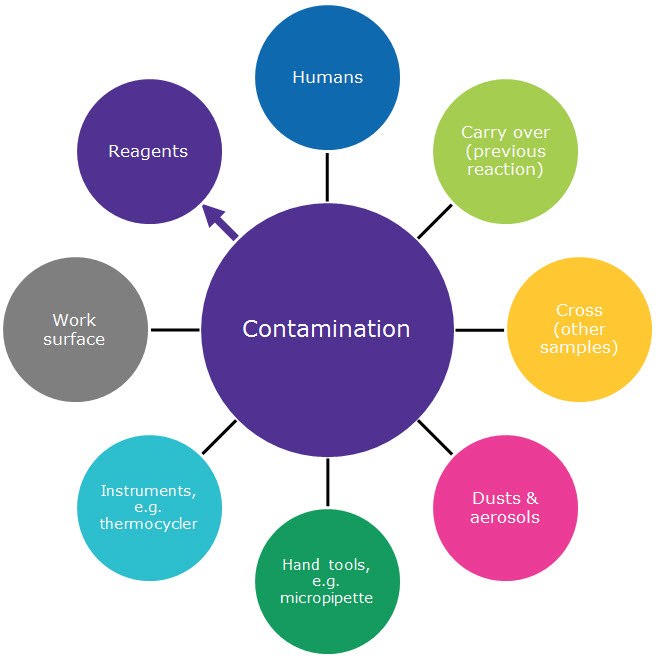No Template Control Oligos (NTCO)
When using PCR (polymerase chain reaction) for detection of a target nucleic acid sequence, whether by qPCR (quantitative real-time PCR), dPCR (digital PCR), or derivative technology, numerous controls must be used to ensure a high-quality assay. Of several negative controls that are typically used, the NTC (no template control) is critical for detecting primer dimers (relevant to SYBR® Green detection only) and more importantly, contamination. While primer dimers can typically be avoided with good assay design, contamination may prove difficult to avoid, and therefore, may lead to signal detection in the NTC.
Signal detection in the NTC is unacceptable as this means the result in the experimental assay may be falsely inflated or even worse, a false positive (especially problematic when the target is a rare mutation). When a signal is detected in the NTC, it is often assumed the problem is among many sources of laboratory handling error (Figure 1). In an attempt to rectify the problem, several approaches are often taken, such as implementing various precautions or deep-cleaning measures (review our PCR Technologies Protocols Introduction for details). Yet, the NTC may still produce a signal after systematically using these approaches, thereby ruling our handling error.

Figure 1.Example sources of contamination that negatively affects both SYBR Green and probe-based qPCR and dPCR. After ruling out everything else, fault may lie with the reagents, but it may not be due to laboratory handling error.
If handling error has been ruled out, then often the only conclusion which can be drawn is that the reagents as shipped from the manufacturer are to blame. Given that oligonucleotides are the main driver of detection, they are likely the culprit. Whether you have ordered primers and/or probes only or one or both with a long oligonucleotide template, miniscule amounts of random, carry-over contamination, which is normal during high-throughput oligonucleotide manufacturing, may be to blame. Continuously improving instruments with evermore sensitive detection have now made what was previously undetectable, detectable.
PCR Oligonucleotides
If you currently use, or plan to use, any of the PCR oligonucleotides in the table below and either of the following situations apply, the method in which your oligonucleotides are manufactured may be critical to a successful assay:
- You work with a popular/common target and see a signal in your NTC that you are unable to eliminate by making laboratory handling changes.
- You intend to begin working with a popular target and believe that your platform is sensitive enough to detect miniscule amounts of random, carry-over oligonucleotide contamination in the NTC.
In either case, our No Template Control Oligos (NTCO) are manufactured to ensure a signal-free NTC, providing confidence in your experimental assay result.
To continue reading please sign in or create an account.
Don't Have An Account?